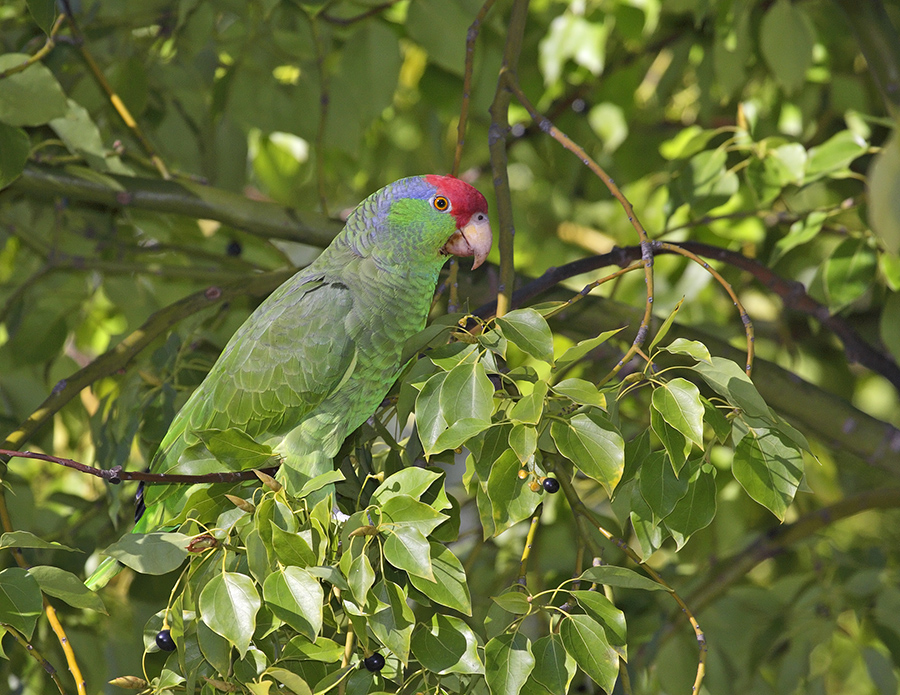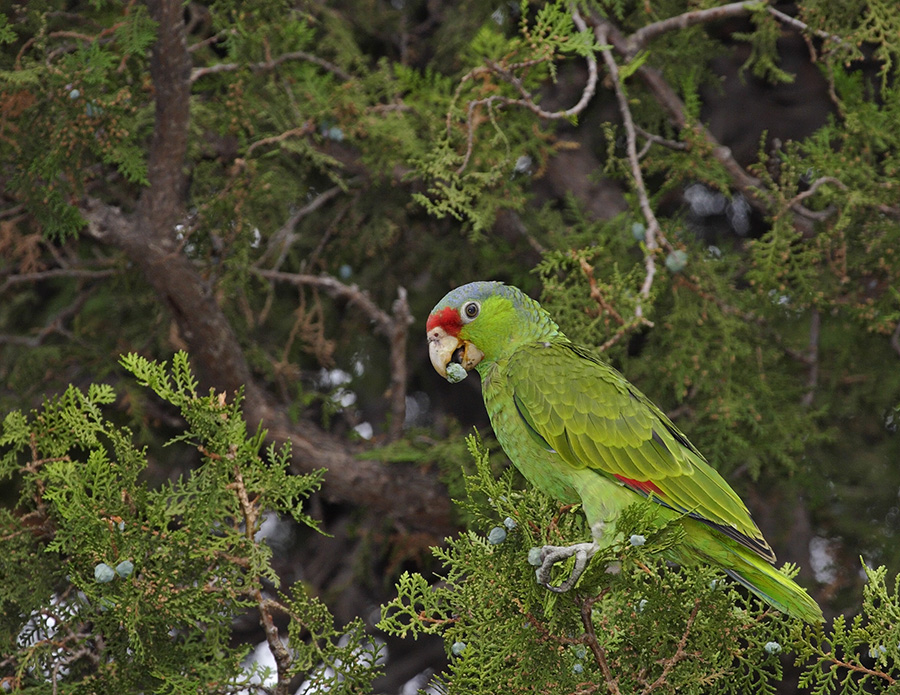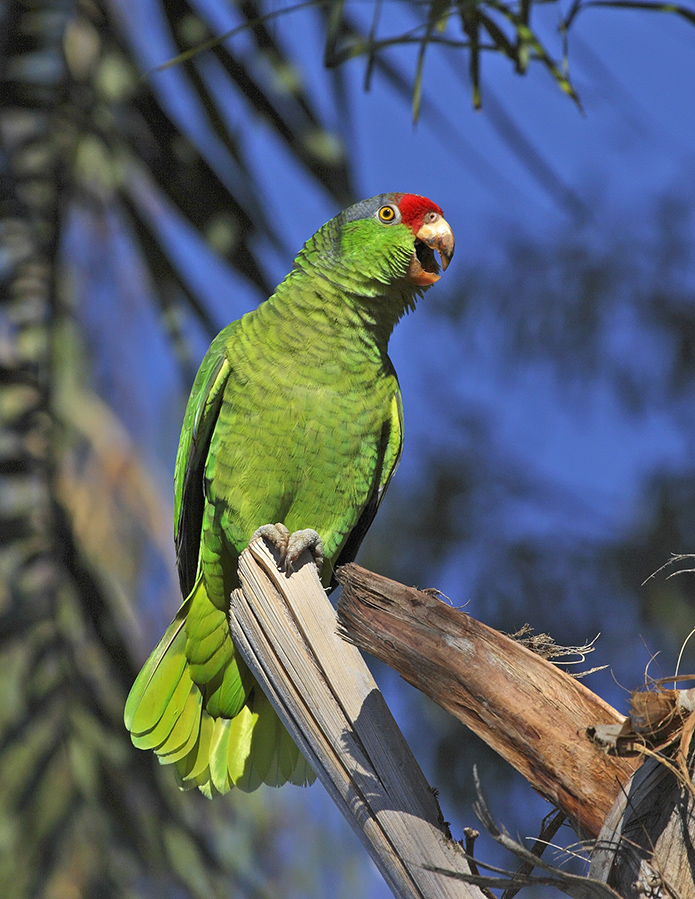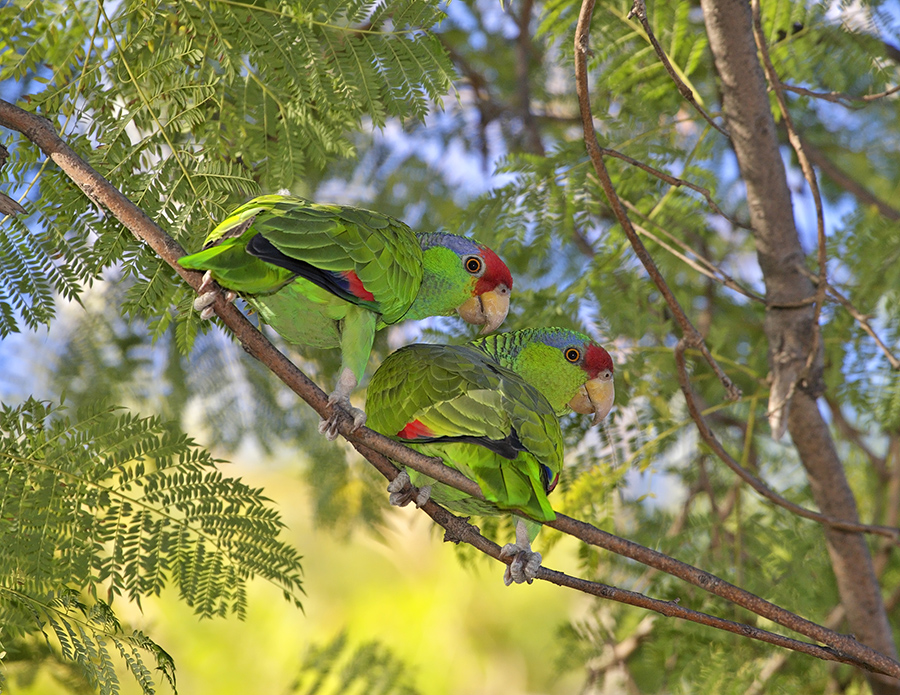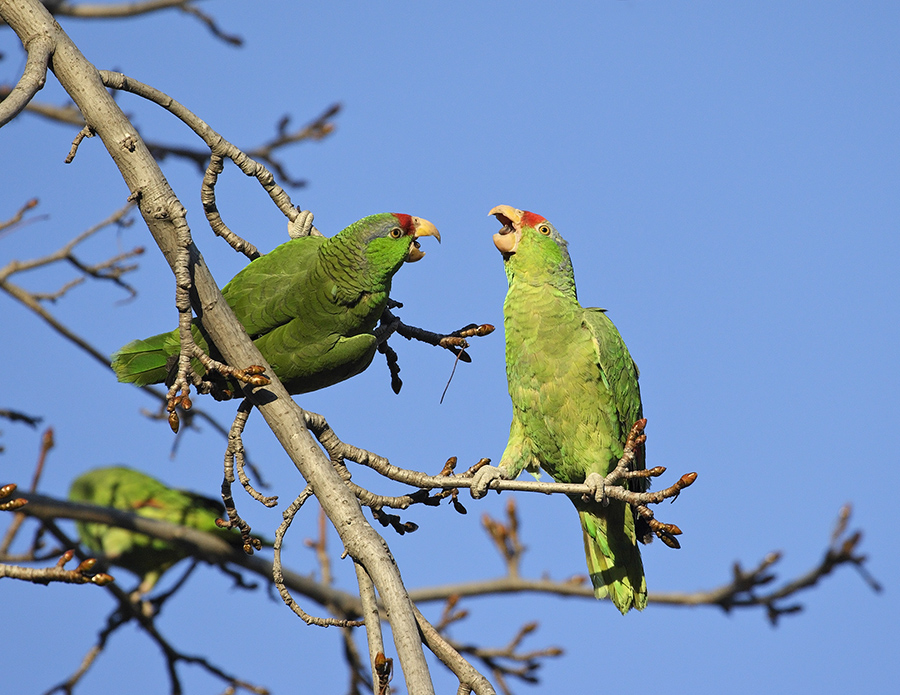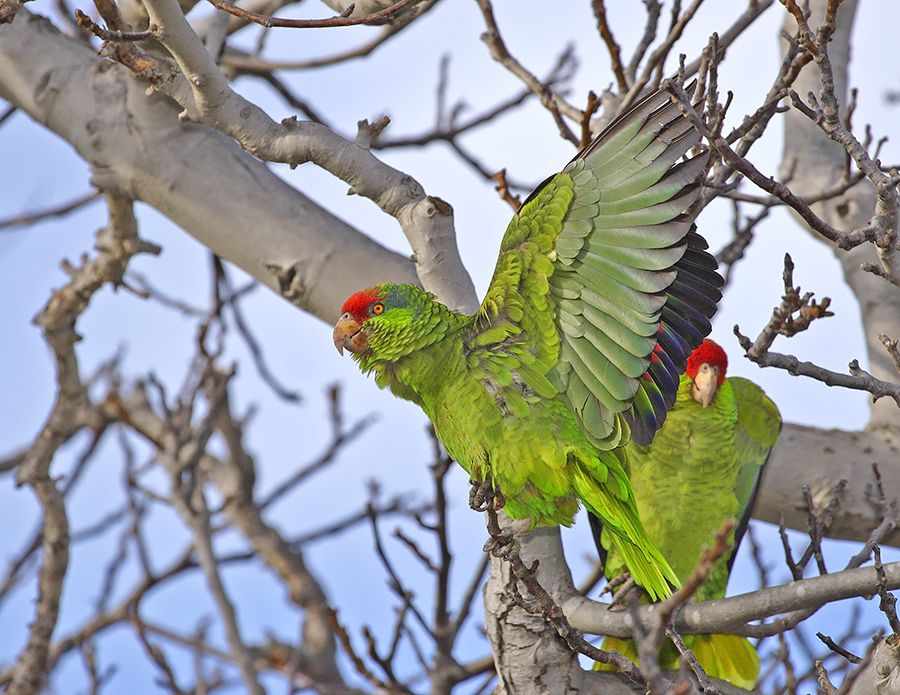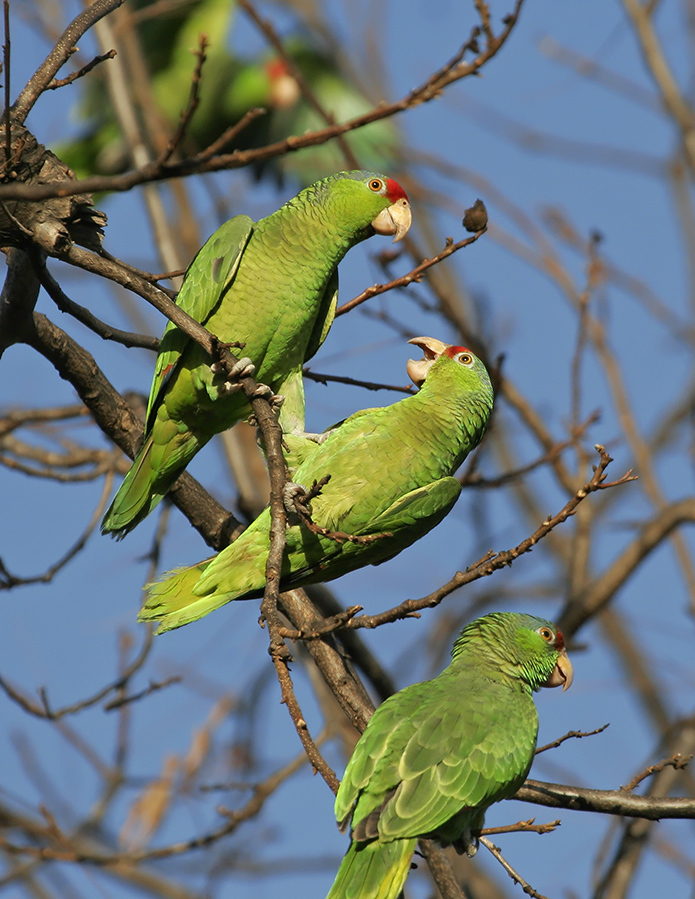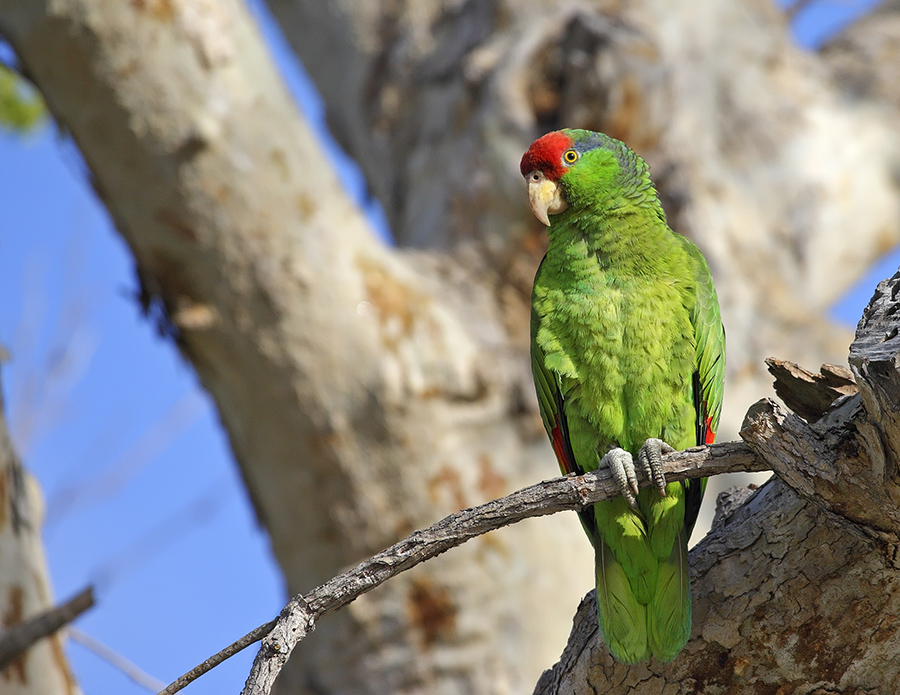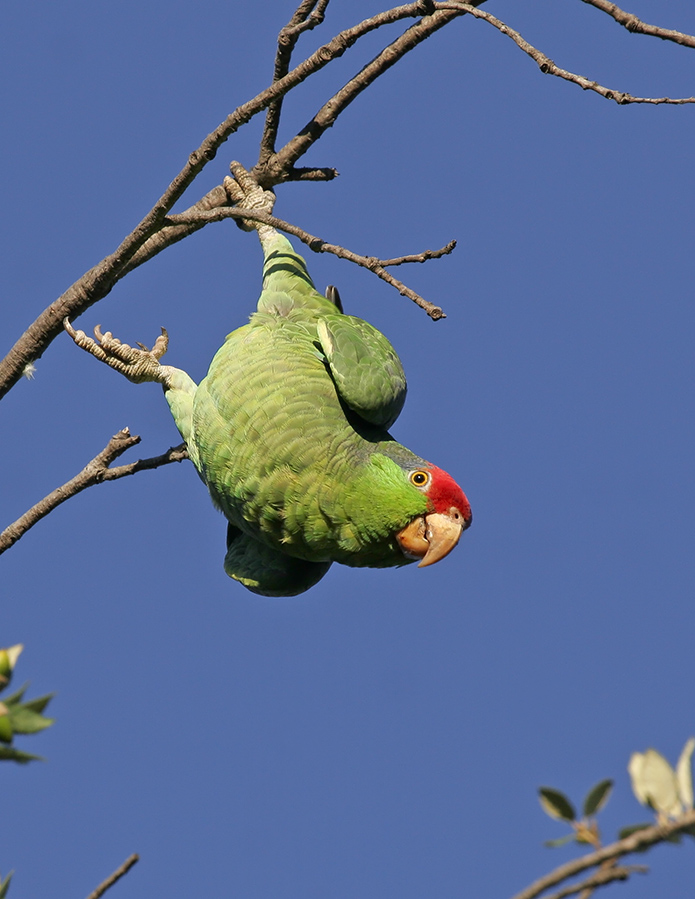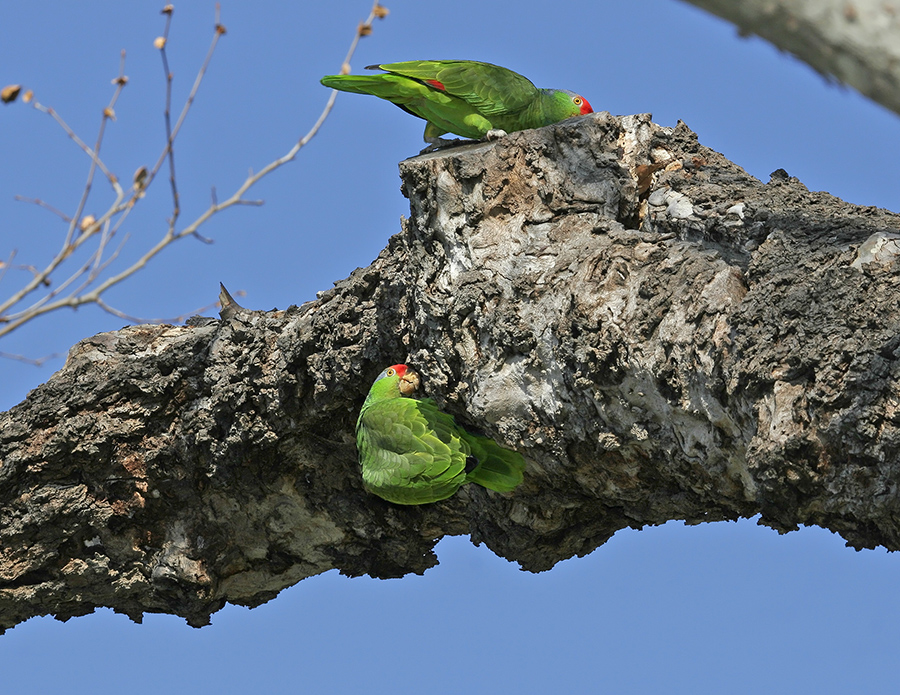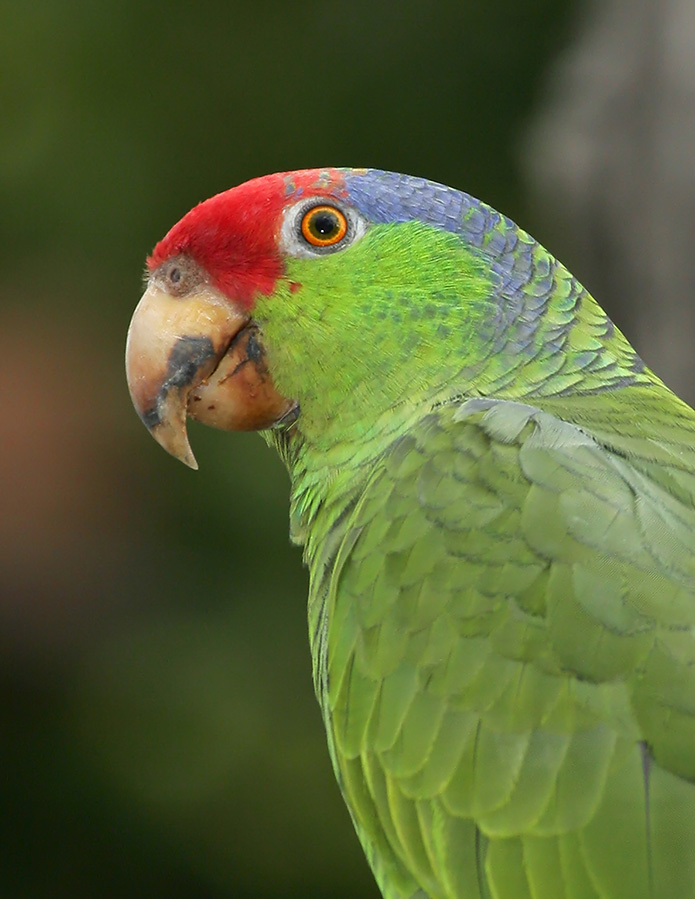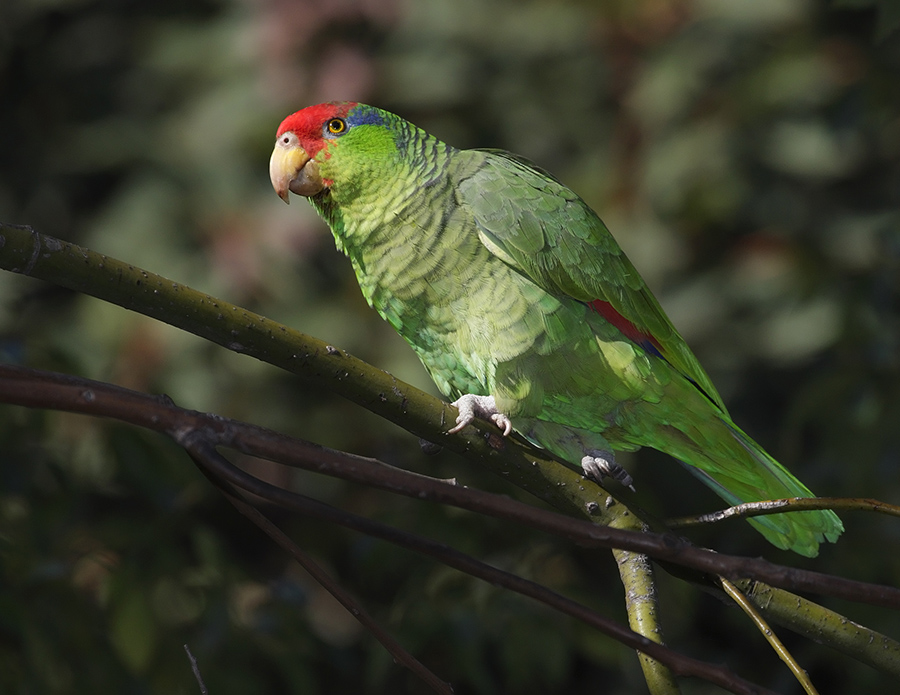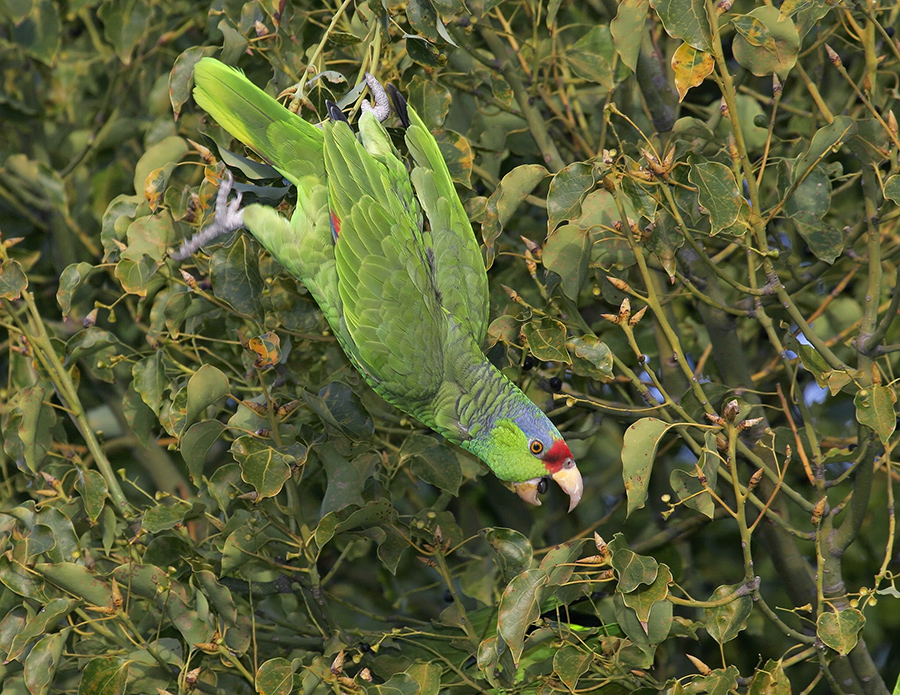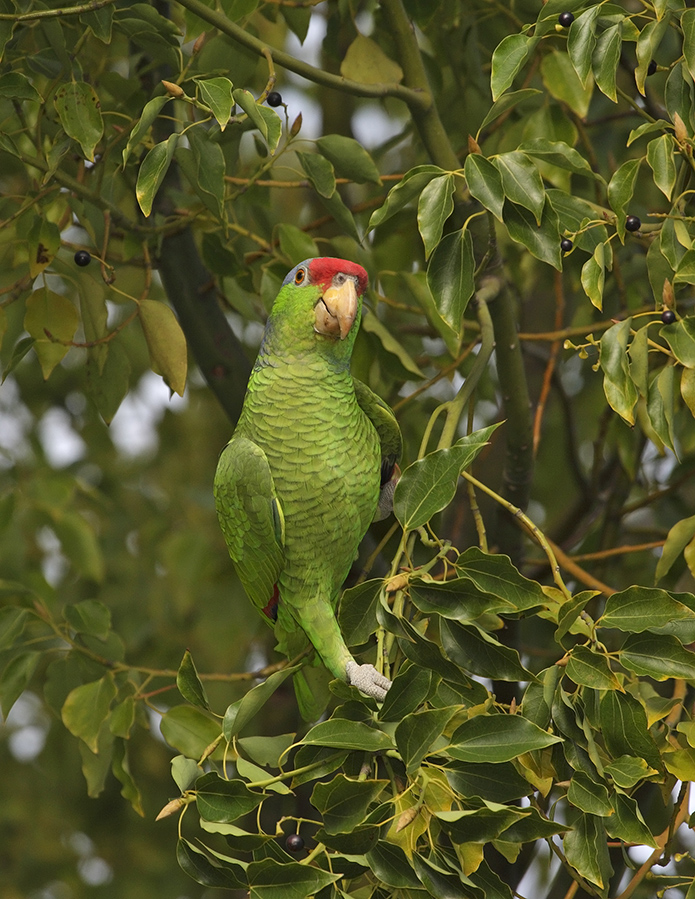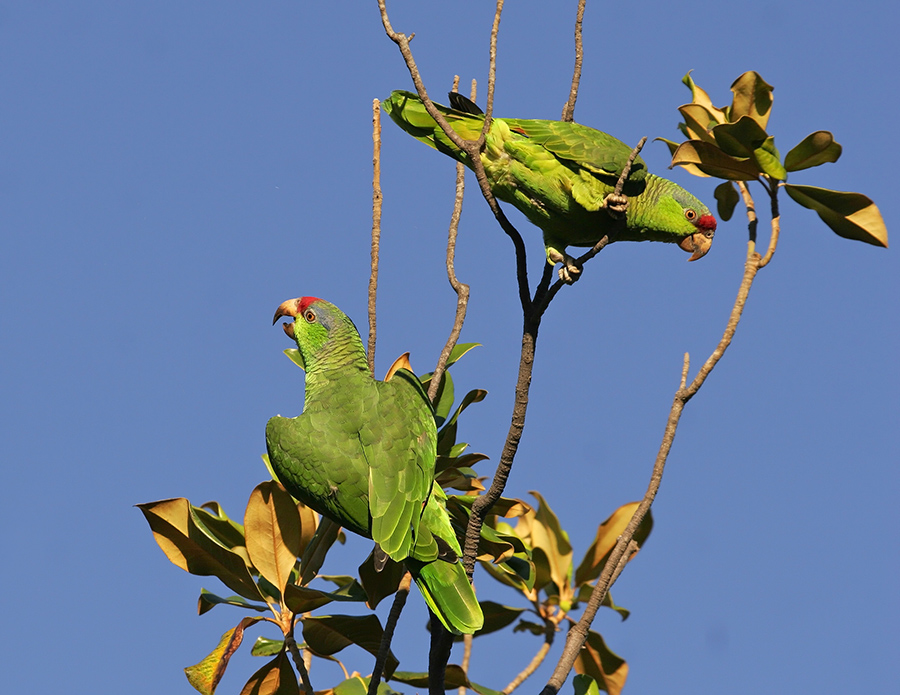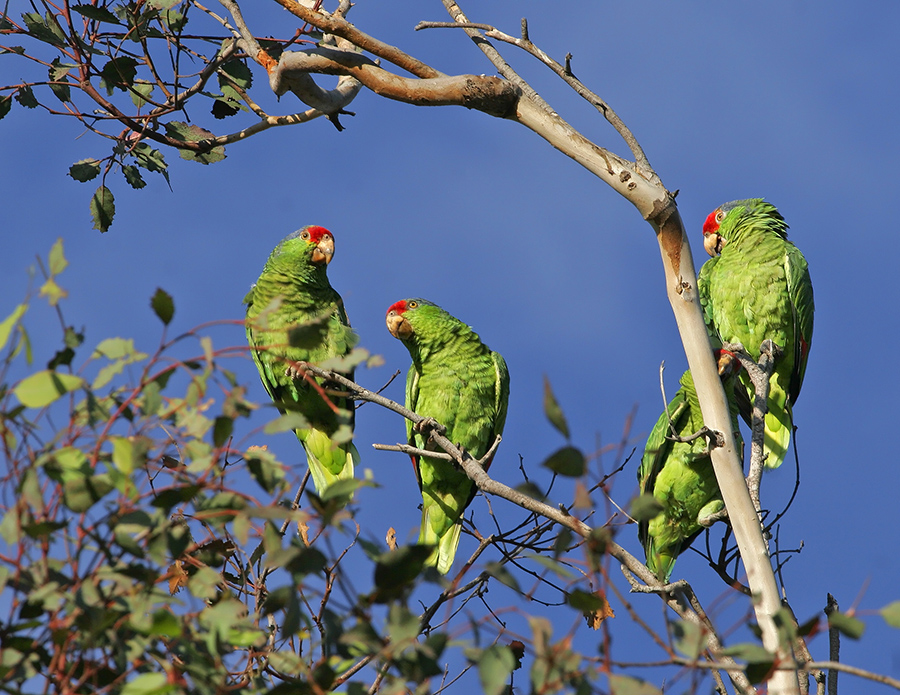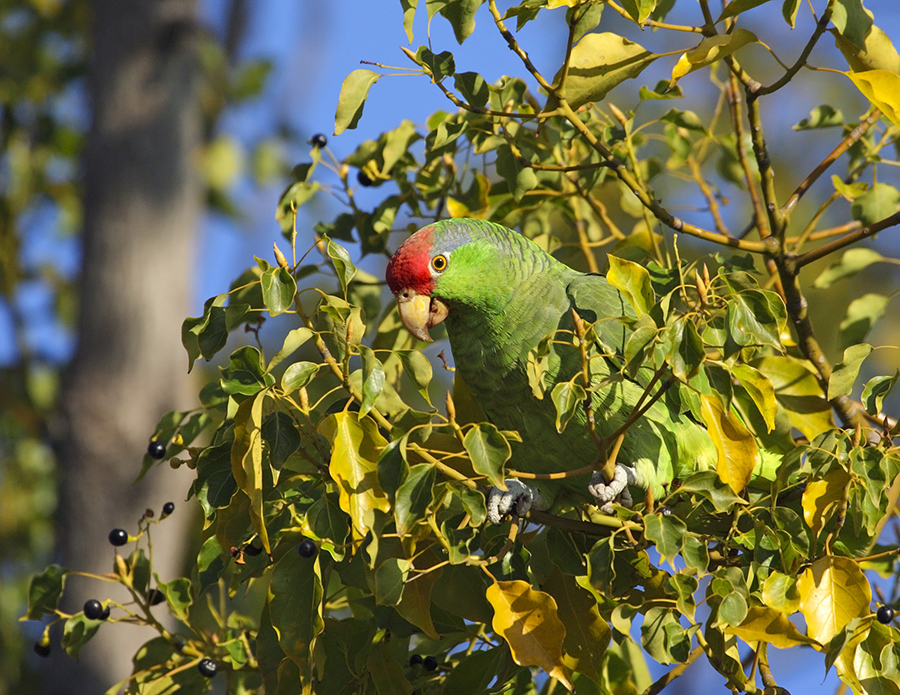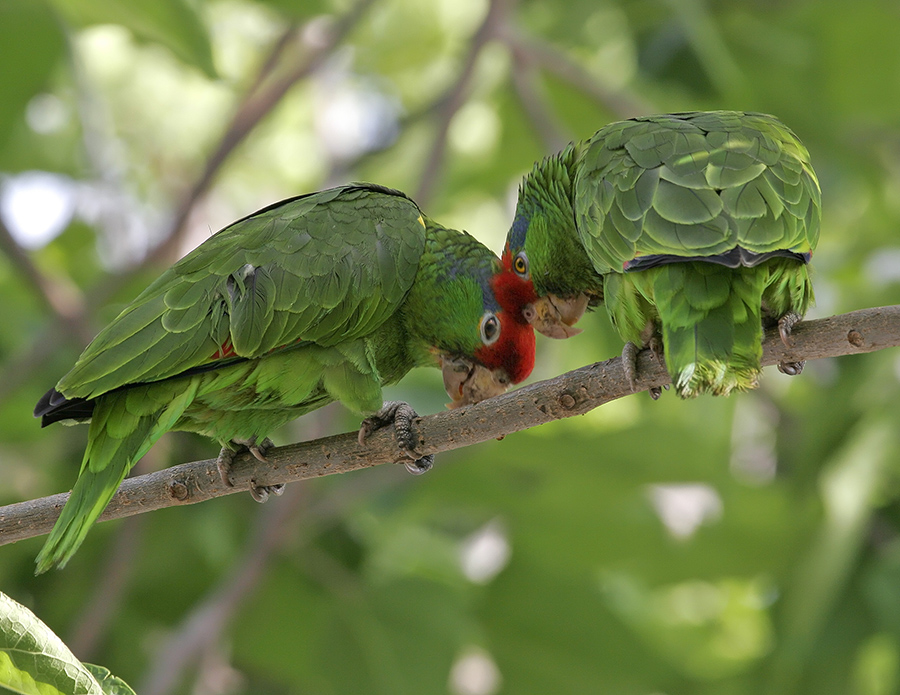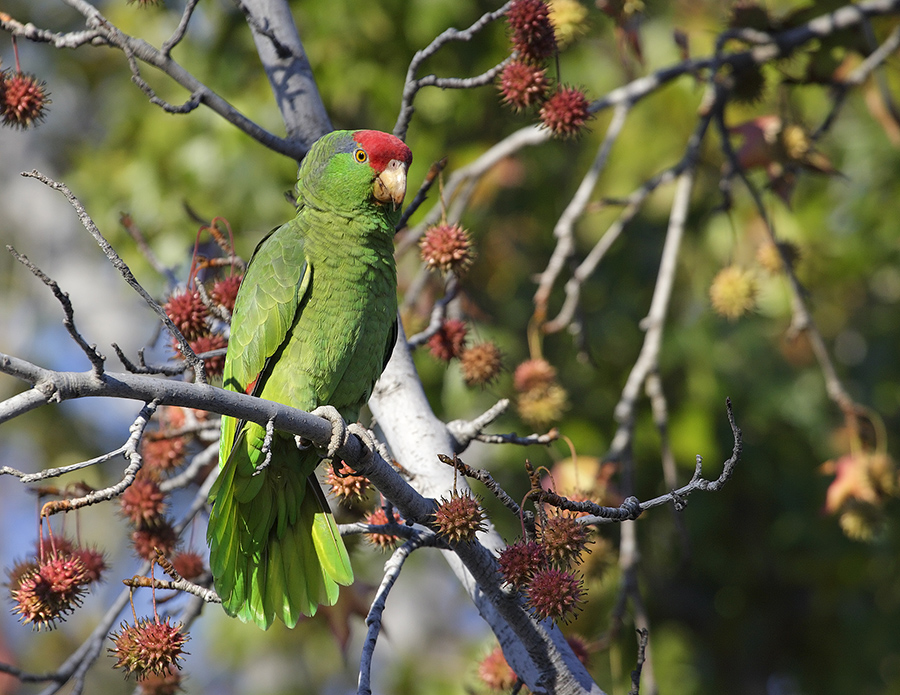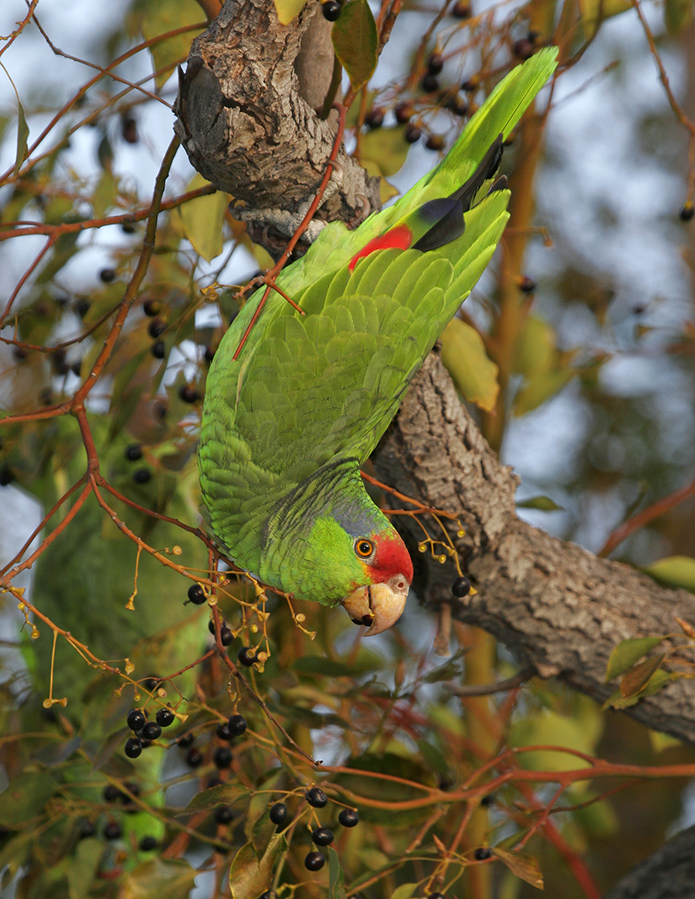Red-crowned Amazon
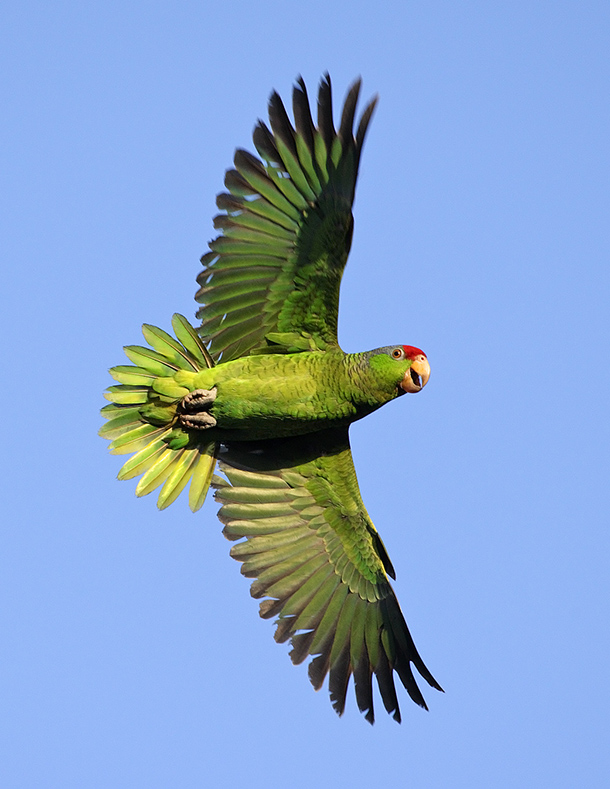
Scientific Name: Amazona viridigenalis
Species Authority: (Cassin, 1853)
Common Names :
Red-crowned Amazon
Green-cheeked Amazon
Red-crowned Parrot
Native to: Belize, Guatemala, Mexico
Status: ENDANGERED SPECIES — IUCN Red List
Assessed: June 2019
Native Population Trend: Decreasing
The Red-crowned Amazon, also known as the Green-cheeked Amazon or the Red-crowned Parrot (Amazona viridigenalis), is a captivating and colorful bird species native to northeastern Mexico. However, due to various factors including habitat loss and the pet trade, its population in the wild has been significantly affected, leading to its classification as an endangered species.
Habitat and Distribution
Originally, the Red-crowned Amazon’s natural habitat was in the lowland forests of northeastern Mexico, particularly in the states of Tamaulipas and San Luis Potosi. These forests provided an ideal environment with abundant food sources and nesting opportunities. The deforestation and habitat fragmentation in these areas have severely impacted the species, contributing to its decline in the wild.
Appearance and Behavior
The Red-crowned Amazon is easily recognizable by its bright green plumage, striking red forehead, and blue highlights in the wings. Adults typically reach a length of about 33 cm (13 inches) and exhibit strong social behavior, often seen in flocks. These flocks can be quite vocal, especially during flight and when roosting in the trees.
Diet
In the wild, their diet primarily consists of seeds, fruits, nuts, and berries. They have a particular fondness for figs and palm fruits, which are abundant in their natural habitat. The Red-crowned Amazon’s strong beak is perfectly adapted for cracking nuts and seeds, while its agile tongue helps in extracting the fruit pulp.
Conservation Status
Due to habitat destruction and illegal trapping for the pet trade, the Red-crowned Amazon has been listed as an endangered species. Conservation efforts are crucial to protect the remaining wild populations. These efforts include habitat restoration and protection, anti-poaching measures, and breeding programs aimed at increasing their numbers in the wild.
Presence in the United States
Interestingly, there are now established populations of Red-crowned Amazons in several urban areas of the United States, notably in California, Florida, and Texas. These populations are largely attributed to escaped or released pets. In these new environments, they have adapted to urban settings and can often be seen in city parks and neighborhoods, where they find food and nesting sites.
Conclusion
The Red-crowned Amazon is a vivid example of the challenges facing wildlife in the modern world. While their adaptability has allowed them to survive in urban areas outside their native habitat, the preservation of their natural environments in Mexico remains critical for the species’ survival. Efforts to protect and restore these habitats, alongside stricter regulation of the pet trade, are essential steps in ensuring the future of this remarkable and beautiful bird.

